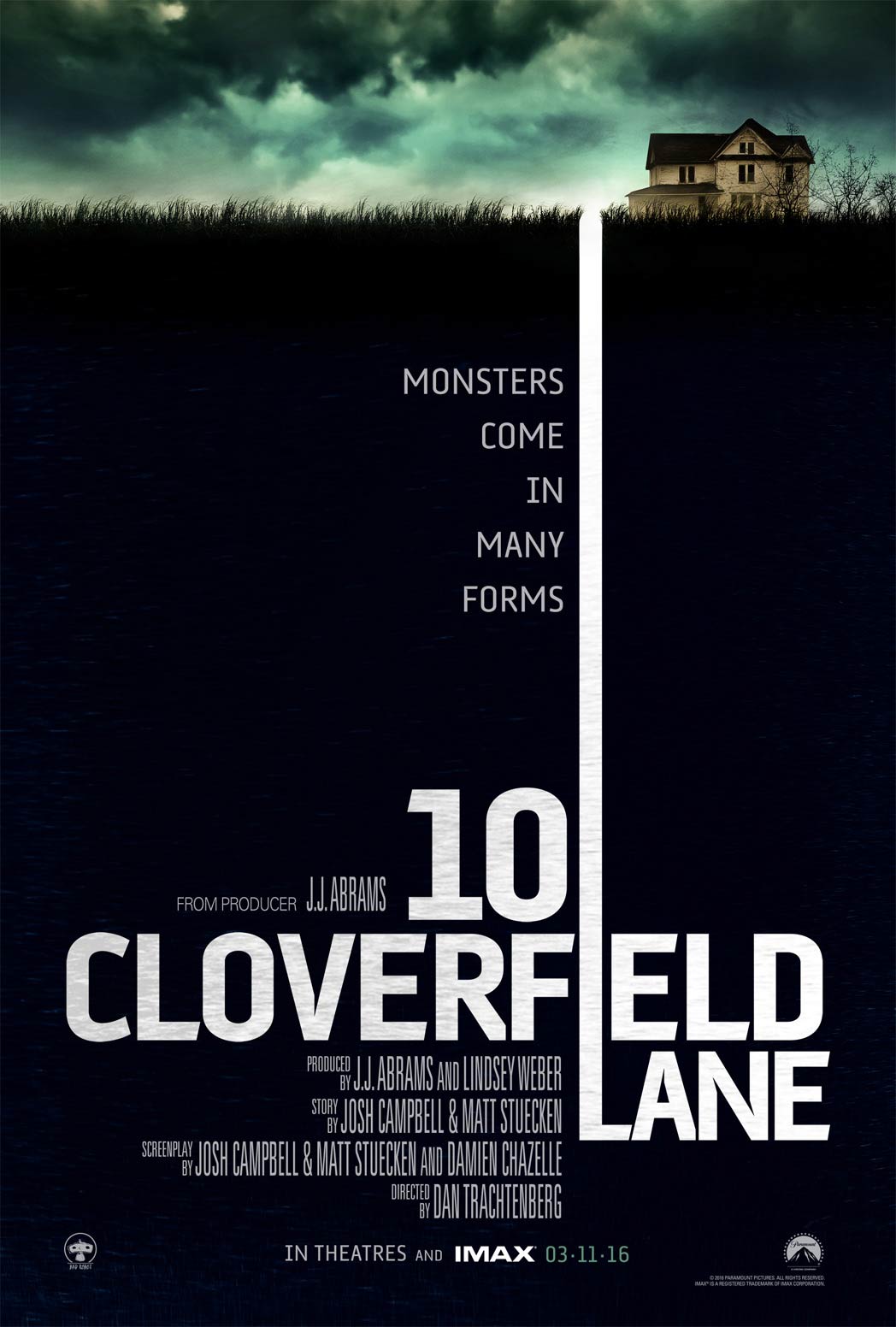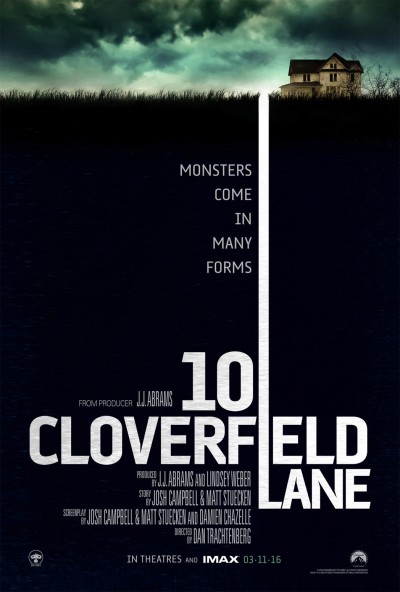J.J. Abrams seems to have his hands in every proverbial cookie jar these days. Whether he’s producing a show for Hulu such as “11.22.63,” rebooting “Star Trek,” or directing box office blockbusters like “The Force Awakens,” his name is everywhere in the entertainment world, in just about every medium. And while he’s a marketing genius with a flair for the enigmatic, it was still a shock that he was able to keep “10 Cloverfield Lane” a secret from us for so long, the movie’s title and trailer only revealed a mere two months before its release.
“Cloverfield” (2008) was a genuinely terrifying and game-changing monster movie. Its “found footage” method was used not as a cliché but as a way of keeping the mystery and terror alive (not to mention giving some people serious motion sickness). Questions like “Where did the creature come from and, more importantly, what the hell is it?” are still being asked today. We’ll never know, and that’s the beauty of it: We saw the attack on New York City through the eyes of regular people like ourselves, grappling with the unknown and uncontrollable forces that may lurk out there.
Now, almost a decade later, Abrams and director Dan Trachtenberg is trying to create a cinematic universe around the brand name of “Cloverfield,” his own anthology of scary stories filled with twists and turns that would bring a tear to the eyes of Rod Serling and Stephen King. But “10 Cloverfield Lane” is more “Outer Limits” than it is “Twilight Zone.” That is to say: Its intentions are good, but its payoff is lousy.
Trachtenberg, a Jewish native of PA who went to the same high school as Bibi and Lil Dicky, recently spoke to the Jewish Exponent about his cinematic influences. He cited “Rosemary’s Baby” — directed by Holocaust survivor Roman Polanski — and Steven Spielberg, along with a more unexpected inspiration. Furthering the connection between his love of film and his Judaism, he said, “There are so many Catholic horror films like ‘The Omen’ and ‘The Exorcist’ — I always remember wondering if Judaism had its own bit of mysticism in it.
“I do remember [my mother] bringing up the Golem,” he added.
So what monster did Abrams and Trachtenberg create in “10 Cloverfield Lane”? Submitted for your approval: Michelle (Mary Elizabeth Winstead), a pretty young thirty-something with a lack of surname driving away from her impending nuptials to Ben (Bradley Cooper, heard only in cell phone calls). Where’s she’s driving, we can only guess, but that’s not the point. The opening is totally silent except for the ominous soundtrack of Bear McCreary as Michelle travels through Louisiana, only stopping for gas at a station advertising Slusho!, the mysterious drink company that started the balagan in the first movie and shows up in Abrams’ other productions.
Michelle never makes it to her destination, as she’s run off the road. She wakes up in a well-equipped bomb shelter at the eponymous address, built by Howard Stambler, a uber creepy dude with an affinity for Martian conspiracy theories and the hits of Tommy James and the Shondells. This is John Goodman’s greatest performance in a long time, playing Howard as a truly unnerving, menacing, paranoid and erratic wacko who will make you pasta one minute and dissolve you in industrial-grade acid the next, depending on whether or not you’re grateful to him. Think Ogilvy from “War of the Worlds” with more VHS cassettes on hand for the end of the world.
Howard won’t let his guests leave, asserting that the outside world is contaminated with fallout. Michelle and Emett DeWitt (John Gallagher Jr.) don’t know whether or not to trust him when information begins to hint that Howard is not all he professes to be. The message of man being just as monstrous as any supernatural entity out there is the most powerful theme the movie has to offer.
Most of the action takes place underground, within the bomb shelter, where first-time director Dan Trachtenberg makes things as tense and claustrophobic as possible for the three characters and makes the audience mistrust everything they see and hear. It’s the movie’s best — and only — strength.
You couldn’t be more wrong in that assumption if you tried, but you know what they say about assuming. The film’s ending just doesn’t mesh with what came before and feels like a cop-out for the viewer who invested an hour and a half of their time waiting for that mind-blowing WTF moment. It’s an anticlimactic climax that even a script co-written by Damien Chazelle (“Whiplash”) cannot save.
Like the first “Cloverfield,” we don’t get all the facts, but since “Lane” is shot and edited like any other movie rather than continuing the found footage style, this withholding of information makes the film feel incomplete rather than a depiction of a real-life scenario. It also could have benefited from an R rating to up the scare/shock factor. And it’s just not as memorable or satisfying as its cousin. Those indelible images of the military fighting the monster on the streets of Manhattan and Marlena exploding from the parasite’s bite still give me goose bumps to this day.
As a huge fan of the original, I see “10 Cloverfield Lane” as nothing more than an interesting marketing miracle and an experiment in the less-is-more filmmaking so often seen in the horror films of the 1970s. Nevertheless, let’s see how forthcoming movies in this universe turn out. For now, let’s file it under ‘C’ for Cloverfield.
Josh Weiss is a student at Drexel University.


